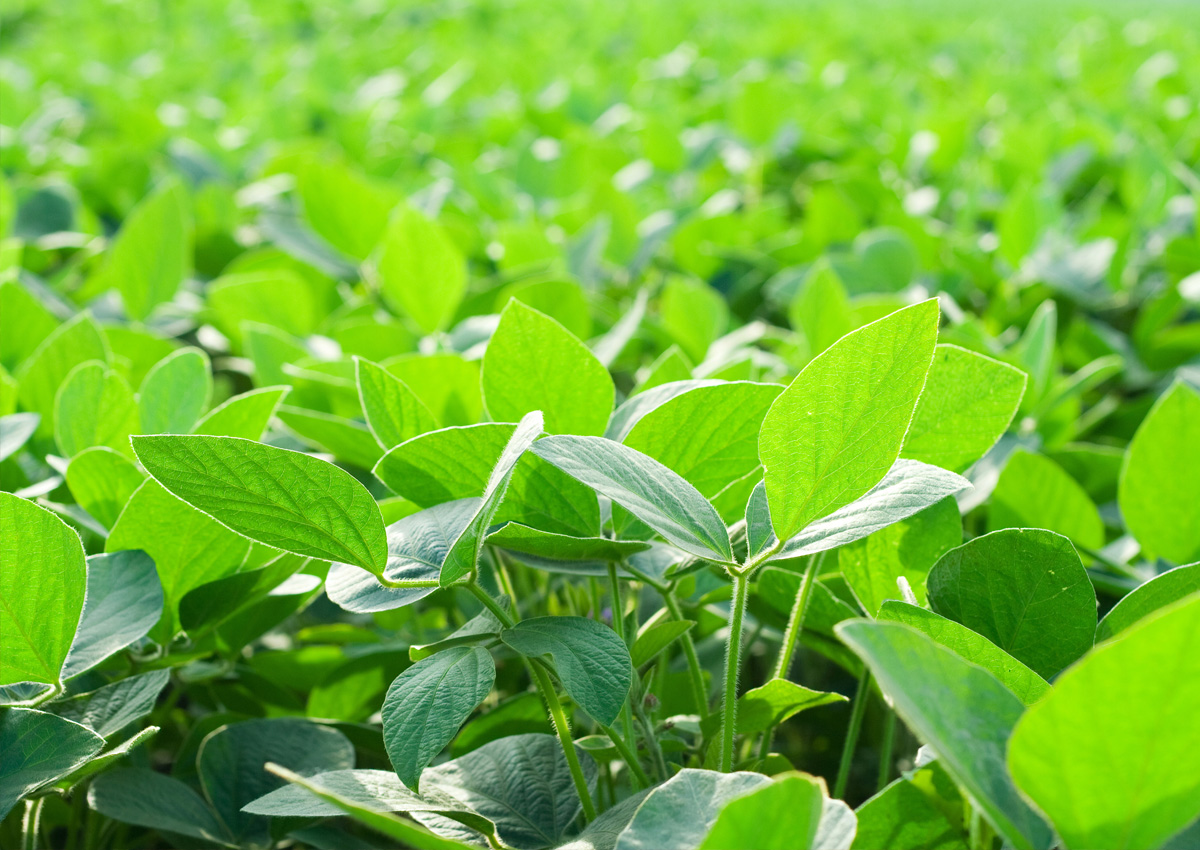
Researchers Prove Multigene Bioengineering of Photosynthesis Increases Soybean Yields
August 24, 2022| |
For the first time, researchers from the research project Realizing Increased Photosynthetic Efficiency (RIPE) have proven in field trials that the multigene bioengineering of photosynthesis increases the yield of soybeans. After more than a decade, the collaborative team led by the University of Illinois and scientists at Lancaster University has transgenically altered soybean plants to increase the efficiency of photosynthesis, resulting in greater yields without loss of quality.
The researchers at RIPE have been working to improve the 100+ step process of photosynthesis for over a decade. In this first-of-its-kind work, the RIPE researchers improved the VPZ construct of the soybean plant to improve photosynthesis and then conducted field trials to see if yield would be improved as a result. The PVZ construct has three genes that code for proteins of the xanthophyll cycle, a pigment cycle that helps in the photoprotection of the plants. In full sunlight, the xanthophyll cycle is activated in the leaves to protect them from damage and to dissipate excess energy. When the leaves are shaded, this photoprotection switches off so the leaves can continue the photosynthesis process. It takes several minutes for the plant to switch off the protective mechanism, which costs the plant valuable time that could have been used for photosynthesis.
The research team soon discovered that the overexpression of the three genes from the VPZ construct accelerates photosynthesis, so every time a leaf transitions from light to shade, the photoprotection switches off faster. Leaves gain extra minutes of photosynthesis which, when added up throughout the entire growing season, increases the total photosynthetic rate. This RIPE research has shown that despite achieving more than a 20 percent increase in yield, seed quality was not impacted.
For more details, read the news releases from RIPE and the University of Lancaster.
| |
You might also like:
- Dynamic Model Measures Impact of Light Fluctuations on Photosynthesis
- Key Mechanism of C4 Photosynthesis Now Explained
- Structure and Function of Photosynthesis Protein Explained in Detail
Biotech Updates is a weekly newsletter of ISAAA, a not-for-profit organization. It is distributed for free to over 22,000 subscribers worldwide to inform them about the key developments in biosciences, especially in biotechnology. Your support will help us in our mission to feed the world with knowledge. You can help by donating as little as $10.
-
See more articles:
-
News from Around the World
- Mandatory GE Food Labeling Impacts Customer Purchases, Study
- Researchers Prove Multigene Bioengineering of Photosynthesis Increases Soybean Yields
- Experts Discover and Start to Crack the Epigenetic Code
- CIMMYT Research Reveals Afghan Wheat's Rust Resistance
- Risks and Trust Among Factors That Affect GM Rice’s Appeal to Chinese Consumers
- Researchers Discover Protein that Turns Plants into Dwarfs
-
Research Highlights
- Biosensors Detect Non-visible Rot in Potatoes
- Drought Tolerant Poplar Trees Perform Well in Field Trials
-
Read the latest: - Biotech Updates (December 10, 2025)
- Gene Editing Supplement (November 26, 2025)
- Gene Drive Supplement (February 22, 2023)
-
Subscribe to BU: - Share
- Tweet

